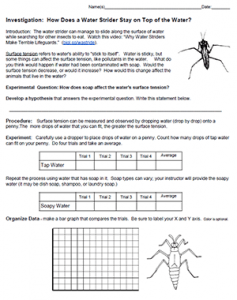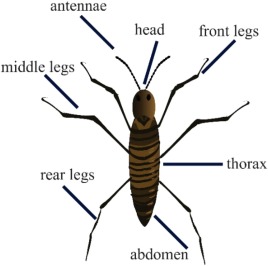
This lab was modified from the “Penny Lab” to focus more on the properties of water and how surface tension is important for aquatic organisms like the water strider. The instructions were designed for an intro (vocational) biology class that only meets for a semester.
We don’t have time to cover insects or animal groups, so I’ve incorporated animals into other chapters and concepts. The lab instructions are very simple, and can be used with the chapter on life properties or with the scientific method.
A 5 minute video (link) is included that shows students how a water strider lives and hunts on the surface of the water. They are then tasked to determine how a pollutant, like soap, would affect the animal. They test the surface tension by using a pipette to add drops of water to a penny. The number of drops from tap water is compared to the drops of soapy water.
Students gather data, create a bar graph, and then draw conclusions. They make a CLAIM about how soap affects the surface tension of water and how that would affect the insect. Students then include EVIDENCE for that claim by referencing the number of drops and the lowering of surface tension. Most do come to the conclusion that soap on the water will cause the water strider to sink.

An interesting follow-up activity on surface tension is to have students carefully place a paper clip on top of water in a cup or beaker. If you add a drop of soap, it will break the surface tension and the paper clip will sink
.

